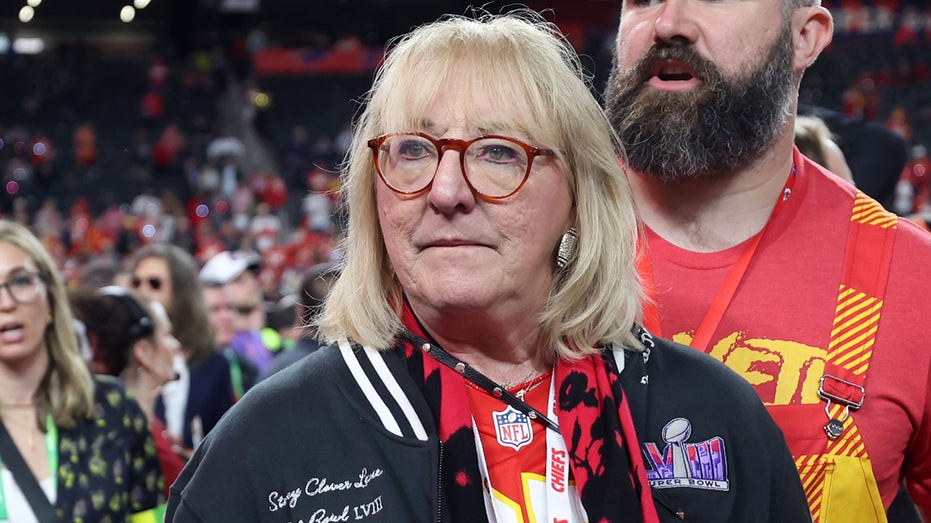“Caveat,” Damian Mc Carthy’s directorial debut, was unnerving in the extreme. So, too, is his follow-up, “Oddity”. “Oddity” is, if anything, even more unsettling. In “Caveat,” Mc Carthy created a creeping sense of dread and outright terror, sometimes from merely pointing the camera at a slightly ajar door. Mc Carthy has patience as a filmmaker. He can wait. He doesn’t try to overwhelm with easy jump-scares. He allows the sense of uneasiness to build and build. Both “Caveat” and “Oddity” share a fascination with potentially supernatural objects, maybe cursed, but also maybe sentient. In “Caveat,” it’s a toy rabbit with alarming angry glass eyes. In “Oddity,” it’s a life-size wooden man. There’s something weird about these objects. They loom large in McCarthy’s imagination.
“Oddity” opens strong. Dani (Carolyn Bracken) is alone in an old stone country house, far from civilization. There’s a loud knock on the door one night. She opens the peephole and a man (Tadhg Murphy) with a wild glare peers through. He has one glass eye. He tells her, urgently, he saw someone enter the house and she is in terrible danger. Dani is, naturally, suspicious of this scary-looking man, and she is hesitant to believe him. It could be a trap. She did hear creaking noises upstairs, though. Maybe he’s right? But does she really want to walk outside with this stranger?
The film then, surprisingly, jumps a year ahead, leaving us in suspense. Dani was killed that night, and the event is cloaked in mystery. Her widower Ted (Gwilym Lee) makes a visit to a little curio shop, run by Dani’s blind twin sister Darcy (also played by Bracken). He has come to deliver an object: a glass eye, the same glass eye worn by the man at the peephole. Perhaps Darcy, who can “read” objects, will be able to “see” through this eye, and figure out what happened to her beloved sister. (Look closely: the terrifying rabbit from “Caveat” is in one of Darcy’s glass cases.) Ted doesn’t seem eager to find out what happened to Dani. He has already started dating someone else, the glamorous Yana (Caroline Menton). Ted and Yana take a weekend trip down to the now-renovated stone house. Darcy makes a surprise visit, and she comes bearing a family heirloom: a life-size wooden man.
Paul McDonnell designed the wooden man, and it is a terrifying creation. The wooden man’s face is awash in agony, his mouth gaping open in a screen. Darcy places him at the table, as though he’s ready for a meal. Yana is freaked out. Ted is a doctor (he works at a hospital for the criminally insane) and is skeptical of all this mumbo-jumbo. He’s got to get back to the city, so he leaves Yana alone there with Darcy (and the wooden man). The wooden man sits at the table all through the dark night. Sometimes, though, he appears to have moved. He’s not where he’s supposed to be. Yana is strangely drawn to the wooden man. What does it mean, what does it convey? The sense of menace in this weirdly-shaped stone house is so thick there’s almost no oxygen. Mc Carthy, again, creates a panicked fight-or-flight response at the sight of a slightly ajar door, or a blank window, an empty hallway. Whatever terror Dani faced on that original night is still alive.
Is the wooden man a protector? Or is he a neutral observer? The rabbit in “Caveat” acted like a canary in a coalmine, alerting people to danger. The wooden man, though, seems more stolid, inert. There are other things moving around this house, there are glimpses of them, maybe caught in a mirror reflection or a flashlight beam. Mc Carthy understands the horror tropes intimately, but he uses them with freedom and freshness, lifting his films out of a specific genre. “Oddity” is a murder-mystery, a supernatural horror, and a home invasion thriller, all mixed together. The glass eyes of “Caveat” travel into the glass eye of “Oddity,” connecting the films spiritually and sensorially.
In “Caveat,” the house was being sucked back into the earth, choked in vines and mold. The house in “Oddity” is a square-shaped structure with an interior parking lot/courtyard, and its renovation has turned it into a work of wonder. An interior balcony stretches above the lower floor. It’s not easy to maneuver around in this space. The characters can’t bolt for the door without exposing themselves. Mc Carthy uses the single settings of his films with sensitivity and creativity. Production designer Lauren Kelly (whose work includes the recent “You Are Not My Mother“) has done a superb job tricking out this stone house in ways that make it a very specific place, a place we have not seen before in film. Gifted cinematographer Colm Hogan makes gorgeous use of shadows illuminated by a fragile flashlight beam, the stillness of spaces, the tension of a static frame. It’s a fraught space, where anything can happen.
The actors are all excellent, with Bracken in particular a standout, playing a double role. Dani and Darcy are two very different women, with different energies and looks and postures. We never see them together, but we never doubt their bond. Menton is great as the increasingly flustered Yana, moving from entitled annoyance to outright terror, as she can’t help but move closer and closer to the wooden man, trying to understand who he is, what he is, what he might want from her.
How could all of this end without tipping into cliche? We know Darcy has been right all along. We know Ted is a little sketchy. We know the house is weird. We might know how things will play out. I won’t say more than this: the final frame is so perfect it exceeds expectations. The moment is a call-back, but it’s also a glimpse of the future. It makes me wish I had seen “Oddity” in a packed midnight show. Mc Carthy does the hardest thing of all: he sticks the landing.

:format(jpeg):quality(80)/wp-content/uploads/2024/09/echinoctiu-de-toamna-2024.jpg)

:format(jpeg):quality(80)/wp-content/uploads/2024/09/e-mai-bogat-dan-sucu-decat-gigi-becali-verdictul-lui-mitica-dragomir.jpg)

:format(jpeg):quality(80)/wp-content/uploads/2024/09/facultatea-din-romania-taxa.jpg)
:format(jpeg):quality(80)/wp-content/uploads/2024/09/harta-romaniei-seceta.jpg)
:format(jpeg):quality(80)/wp-content/uploads/2024/09/pro-tv-a-construit-un-etaj-cu-apartamente-pentru-serialul-scara-b.jpg)
:format(jpeg):quality(80)/wp-content/uploads/2024/09/mesajul-astrelor-6-septembrie.jpg)

:format(jpeg):quality(80)/wp-content/uploads/2024/09/befunky-collage-2024-09-05t094050638.jpg)






:format(jpeg):quality(80)/wp-content/uploads/2024/09/barbra-banda-e1725558341540.jpeg)
:format(jpeg):quality(80)/wp-content/uploads/2024/09/rocada-lennon-sumudica-pe-banca-rapidului-analizata-la-sange-in-direct-din-kuweit.jpg)
:format(jpeg):quality(80)/wp-content/uploads/2024/09/salarii-manchester-united-scaled.jpg)










